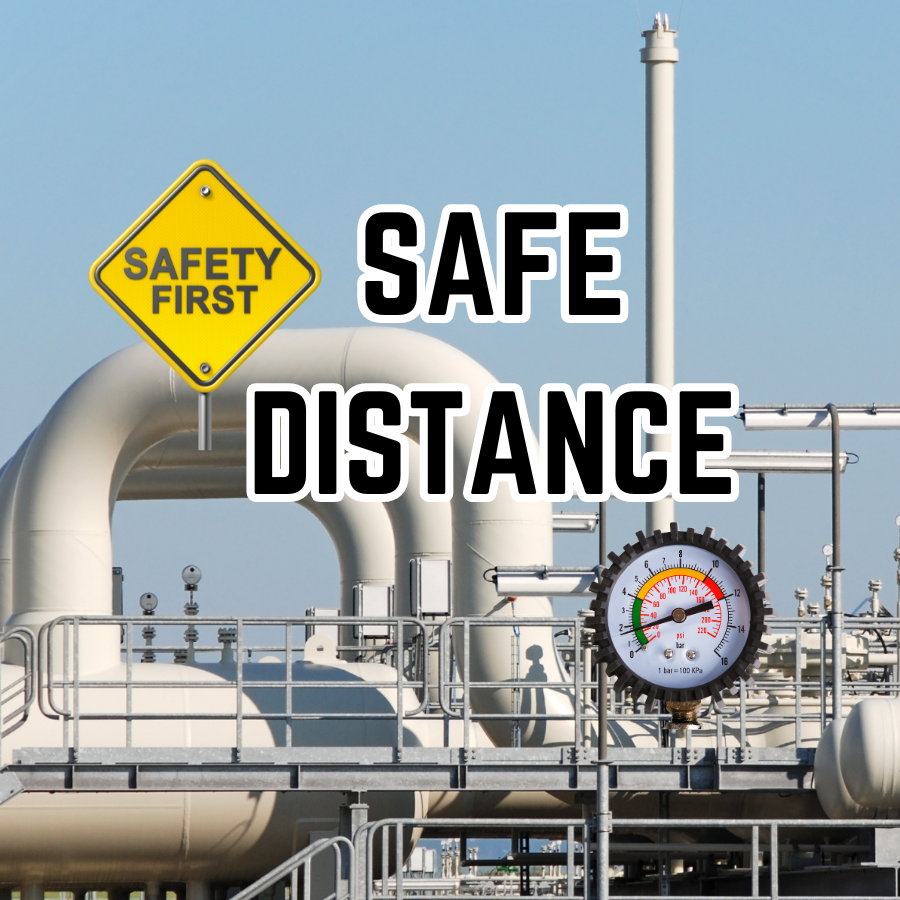Spring Support
The most economical and effective way to support the piping is simply to rest on a structure. Rigid supports and restraints can always be used if there is no vertical expansion on the piping system.
But in some cases, some parts of the piping system or the connected equipment nozzle are exposed to vertical displacement due to temperature changes.
Because of the vertical displacement, the rigid supports will be inactivated due to the gap underneath. You can see the below picture. In the operating conditions, the load on the rigid supports will be shared with nearby supports and/or equipment connections as the rigid support do not hold any load due to the gap underneath.
Let’s see with an example;
There is a typical vertical vessel and a piping connected to it. The pipe rests on a pipe rack structure. As the temperature rises on the pressure vessel, the expansion of the vessel also increases and so the connected piping lift from the first rigid support. With a further temperature increase, the system may lift the second rigid support as well.
These inactive rigid supports (due to the vertical movement), increase the sustained stress hence, it will be the main issue to be resolved by a piping stress engineer.
The pipe weight includes the fluid, insulation, inline equipment, connected valves, flanges, and all other attachments. So, the pipe weight must be supported at each case during the lifetime not only in the hydro test and sustain cases but also in operational cases. This is why, the supports that are inactive at operating conditions can not be left as it is. So, we need to use flexible support.
The reason we call it ‘flexible’ is because of the axially movable rod or shaft within the spring support. For this example, we should use a spring support. The spring support always keeps the pipe supported even if the line is vertically displaced. By this, the sustained stress is reduced. The supporting force of the spring support can change as the pipe moves vertically up or down. This type of spring support is called “variable spring support”.
While the load variations of a spring hanger exceed the acceptable limit or vertical displacement exceeds the variable spring support range, a “constant spring support” can be used. At constant spring support, the supported load is stable but the range of the displacement is large.
Spring support consists of a can, a spring, and a rod that is touching to pipe shoe or clamp directly.
Spring Support Selection
When selecting the spring support, we need to know the hot load, maximum permissible load variation, and travel displacement. Then we will be able to select the spring rate and we can select the required spring support from the manufacturer’s catalogs. The height and diameter of the can, the diameter of the rod and the rigging accessories will be selected by the manufacturer according to the selected spring support type. The only thing a piping stress engineer should do is select the right type of spring support following the information taken from computer analysis output values.
This is the formula to be used.
Load Variation = Displacement x Spring Rate / Hot Load = (Hot Load- Cold Load)/Hot Load
Permissible load variation is limited internationally by common specifications for pipe stress analysis to a maximum of 25% of the operating load. This means that the spring will not carry more than 125% or less than 75% of the balanced load. The unbalanced load will be transferred to nearby support or connected equipment.
LOAD VARIATION TABLE FOR DIFFERENT EQUIPMENT
The below table is a typical selection chart and this chart changes by each manufacturer. Piping Stress Engineers can use this chart for spring hanger selection.
A piping stress engineer should calculate the spring rate by using the above formula. Knowing the displacement, hot load, and load variation will make it easy to find the spring rate.
Here is an example;
Hot Load: 6000N, Displacement: 15mm, Load Variation should be less than 25%
Spring Rate= 25*6000/(15*100) = 100N/mm
From the table, We should select Type-5 and a spring rate of 66,6N/mm can be selected for medium size.
Once we check the maximum travel distance, it is 40mm which is more than 15mm, which is sufficient for us.
Then we calculate the cold load by the formula below;
Cold Load = Hot Load + Displacement * Spring Rate
For our example it will be;
Cold Load=6000+15*66,6=7000N
Once we go down from 6kN and find 7kN (cold load) we can see the corresponding travel range, which is 55mm, showing us the selected spring support is suitable for our example.
If the cold load is not within the working range, the other side that contains the hot load can be selected. If both spring support sizes’ are not within the working range, a lower spring rate that is a longer displacement range shall be used.
You can watch the YouTube video about Spring Support;
Spring Support Selection on Piping Design









This blog is intended as a guide to determining the minimum safe spacing of plants and equipment in Oil Refineries, Petrochemical Complexes, and similar installations.
The spacing recommendations will apply in the absence of Clients' standards or supplement such standards where necessary. They are based on current industry practice.
The spacing recommendations aim to ensure that available plot areas are used economically without affecting personnel safety or plant vulnerability.